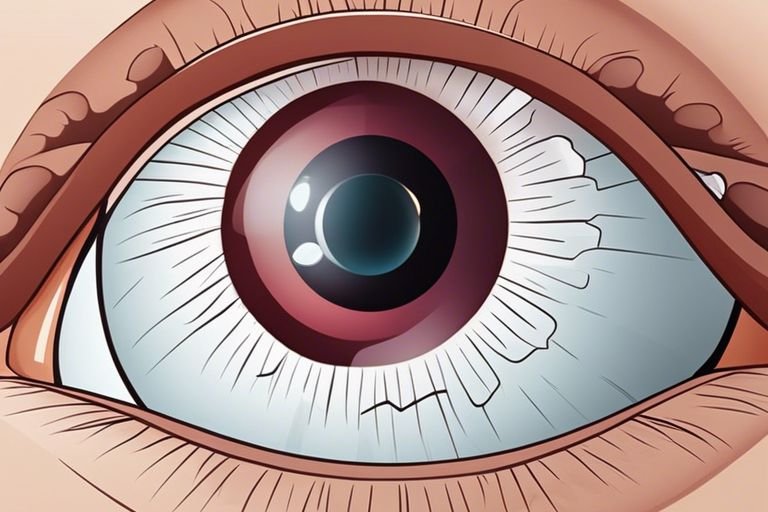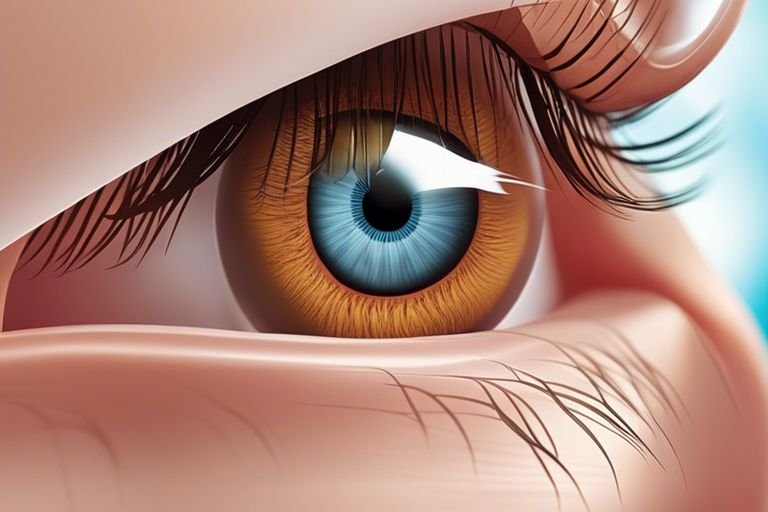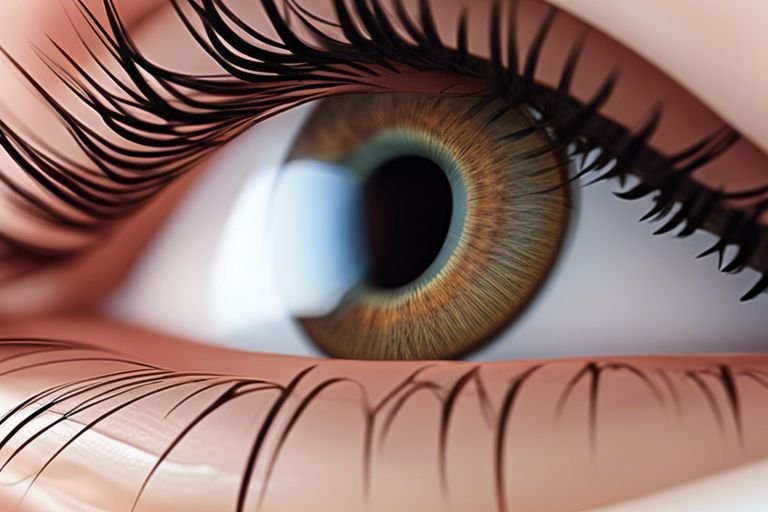Have you ever wondered why eyelashes curl? The shape of our eyelashes may seem like a minor detail, but it plays a significant role in our eye health. The natural curve of our lashes actually helps to protect our eyes from dust, debris, and sweat by acting as a barrier. However, excessive curling can lead to irritation, ingrown lashes, and even vision problems. Understanding why our eyelashes curl can help us maintain their health and prevent potential issues. Let’s explore into the science behind eyelash curling to uncover the mysteries of this seemingly simple yet crucial feature of our eyes.
Key Takeaways:
- Genetics play a significant role: The curl of your eyelashes is mostly determined by your genes.
- Eyelash structure matters: The shape and structure of the hair follicle contribute to the curl of your lashes.
- Direction of hair growth: The direction in which your eyelashes grow can influence their curl pattern.
- Mechanical factors: Factors like the way you handle your eyelashes can impact their curl over time.
- Heat and humidity: Environmental factors like heat and humidity can affect the curl of your lashes.
- Use of eyelash curlers: Curlers can temporarily enhance lash curl, but excessive use may damage them.
- Lash lifting treatments: Lash lifts are a popular option to alter the curl pattern of your natural lashes.

Anatomy of the Eyelash
Eyelashes may seem simple, but their anatomy is quite intricate. Understanding the structure of eyelashes can help shed light on why they curl and the role they play in protecting our eyes.
Natural Growth Patterns
The way eyelashes grow is fascinating. Each eyelash has three phases of growth: anagen (active growth), catagen (transition), and telogen (resting). The length and curliness of eyelashes are determined during the anagen phase, which can last up to 30 days. It is essential to note that eyelashes do not all grow at the same rate or in the same phase, leading to the natural variation in length and curliness.
During the catagen phase, the follicles shrink, and the lashes detach from the blood supply, preparing to shed. Finally, in the telogen phase, new lashes start to grow, pushing out the old ones. This natural growth pattern ensures a continuous cycle of eyelash renewal.
Structural Composition
Eyelashes consist of keratin, a type of protein that is also found in hair and nails. The unique structure of keratin in eyelashes gives them their strength and flexibility. Moreover, each eyelash is anchored to a hair follicle on the eyelid, which supplies essential nutrients for growth.
The cross-sectional shape of an eyelash is oval, unlike the round shape of scalp hair. This oval shape, combined with the keratin composition, contributes to the natural curl of eyelashes. Additionally, eyelashes have sebaceous glands at the base, which produce oils that help keep them moisturised and healthy.
Factors Influencing Eyelash Curl
When it comes to the mesmerising curl of eyelashes, several factors play a role in determining their natural shape and curvature. Understanding these factors can provide insights into the science behind eyelash curling.
Genetics and Heredity
Genetics and heredity are major influencers when it comes to the curl of your eyelashes. The genes you inherit from your parents can dictate the length, thickness, and curliness of your lashes. This means that some individuals are genetically predisposed to have naturally curled eyelashes, while others may have straighter lashes due to their genetic makeup.
The angle of insertion of hair follicles in the eyelids is determined by genetics, which affects the direction in which the lashes grow. Additionally, the shape of the eye socket can also influence how eyelashes curl, as it impacts the way they brush against the skin. Any variations in these genetic factors can result in differences in eyelash curl.
Environmental and Lifestyle Factors
Aside from genetics, environmental and lifestyle factors can also influence the curl of your eyelashes. Exposure to heat and humidity can cause lashes to curl more prominently, while using eyelash curlers can provide a temporary curling effect. Additionally, mascara containing certain polymers or fibres can help maintain the curl of lashes throughout the day.
Using oil-based products on your lashes or rubbing your eyes vigorously can lead to straightening of the lashes over time. The quality of your diet and hydration levels can also impact the health and strength of your lashes, potentially affecting their natural curl. The key is to be mindful of these factors to maintain the curl of your eyelashes.

The Science Behind Curling Techniques
Mechanical Curling Methods
When it comes to curling eyelashes, there are various mechanical techniques that have been developed over the years. One popular method involves using a traditional eyelash curler, which works by clamping the lashes and holding them in a curled position for a few seconds. This technique relies on pressure and manipulation to bend the lashes upwards, creating a curled effect.
Another mechanical method gaining popularity is the heated eyelash curler. This device uses heat to help set the curl in the lashes, providing a longer-lasting result. By combining heat with the curling action, users can achieve a more natural-looking curl that holds throughout the day.
Chemical Treatments and Potential Risks
For those looking for a more semi-permanent solution, chemical treatments like lash lifts and perms are available. These treatments involve applying a chemical solution to the lashes to alter their structure and encourage them to curl. While these treatments can provide long-lasting results, there are potential risks involved, such as damage to the lashes if not done correctly.
It’s important to consult a trained professional when considering chemical treatments for your lashes to minimise the risk of complications. Over-processing or using harsh chemicals can lead to weakened, brittle lashes that are more prone to breakage.
When opting for chemical treatments, always do your research and choose a reputable salon with experienced technicians to ensure the safety and health of your eyelashes.

Caring for Curled Eyelashes
After achieving beautifully curled eyelashes, it’s essential to care for them properly to maintain the curl and keep them looking fabulous. Caring for curled eyelashes is a crucial step in your beauty routine to ensure they stay healthy and defined.
Maintenance Tips
When it comes to maintaining curled eyelashes, there are a few key tips to keep in mind. Gently remove makeup at the end of the day using an oil-free makeup remover to avoid weighing down the curl. Avoid rubbing your eyes vigorously to prevent damage to the lashes and maintain the curl.
- Use a lash comb to separate any clumped lashes and keep them looking defined.
- Avoid using waterproof mascara, as it can be challenging to remove and may cause the lashes to lose their curl.
- Be gentle when curling your lashes with an eyelash curler to prevent breakage or damage.
Knowing these maintenance tips will help you keep your lashes curled and looking gorgeous for longer.
Common Mistakes to Avoid
While caring for curled eyelashes, it’s essential to be aware of common mistakes that can undo all your hard work. Sleeping in mascara can lead to clumped lashes and breakage, causing the curl to flatten out. Rubbing your eyes excessively can also damage the lashes and disrupt the curl pattern.
- Using an old or damaged eyelash curler can pull or tug on the lashes, leading to breakage and a loss of curl.
- Skipping the mascara removal step can cause the lashes to become brittle and prone to breakage, ruining the curled effect.
Avoiding these common mistakes is essential for maintaining the health and curl of your eyelashes in the long run.
The Curl Conundrum – Why Do Eyelashes Curl?
To summarize, the curl of eyelashes is primarily due to their unique structure and composition. The shape and curvature of eyelashes are determined by the arrangement of keratin protein within each hair follicle. This natural curl helps protect the delicate eye surface from debris, sunlight, and moisture. Understanding the science behind eyelash curling can help us appreciate the intricate design of our bodies and the fascinating ways in which they adapt to fulfil essential functions. So, the next time you admire someone’s curly eyelashes, you’ll know it’s not just for looks but also for the protection and well-being of their eyes.
FAQ
Q: What causes eyelashes to curl?
A: The curling of eyelashes is primarily governed by genetics. The shape of the hair follicle determines whether an eyelash will grow straight or curl.
Q: Are curled eyelashes a sign of a health issue?
A: In most cases, curled eyelashes are not indicative of any health problems. However, sudden changes in the curl of your eyelashes should be monitored and discussed with a healthcare professional.
Q: Can eyelashes change their curl over time?
A: Yes, due to factors such as age, hormonal changes, and certain medical conditions, eyelashes can change their curl pattern over time.
Q: How can I enhance the curl of my eyelashes?
A: You can enhance the curl of your eyelashes by using an eyelash curler, applying mascara specifically formulated for curling, or getting a professional eyelash lift.
Q: Are there any risks associated with curling eyelashes?
A: Using an eyelash curler incorrectly or too frequently can damage your eyelashes, causing them to become brittle or even fall out. It is important to use caution and follow instructions carefully.
Q: Do different mascara formulas affect eyelash curl?
A: Yes, some mascara formulas are designed to enhance and hold the curl of your eyelashes, while others may weigh them down, causing them to straighten out.
Q: Can natural remedies help in maintaining eyelash curl?
A: Natural remedies like applying castor oil or coconut oil to your eyelashes can help nourish them and promote healthy growth, which may indirectly contribute to maintaining their curl.
